Hard to believe that it has been almost two weeks since we were in Mendoza. Since then, we’ve explored the furthest south point we’ve visited, Ushuaia, and then caught a flight back to Buenos Aires were we took a ferry across the river to visit Colonia de Sacramento in Uruguay. A Sunday afternoon bus ride now puts us in Montevideo, Uruguay, on a very rainy Monday morning. We were literally the only guests in our hotel, the Alma Historica Boutique, until a couple of backpackers arrived after breakfast. Having arrived on a Sunday evening, Montevideo is seeming pretty sleepy. We’ll get out later today and see what Uruguay’s largest city has to offer.
Waiting for rain to pass provides a good opportunity to catch up on a few trips we haven’t shared yet, and lets us finish up Mendoza. Mendoza may seem all about wine and the desert, but any time you look up to the horizon, it is difficult not to notice the surrounding Andes. The Andes mountains are actually what gives the vineyards such a rich habitat for grapes. The vineyards are situated in the Andean foothills, which provide an ideal combination of temperatures, soils, and water that make Mendoza such a fertile grape growing region.
No visit to Mendoza is complete without venturing into those mountains and taking the drive along Route 7, the Alta Montaña Route, toward Aconcagua and the Chilean border. Route 7 is actually the main highway to Santiago, Chile, which we were unfortunately unable to cross over to due to Chile’s continued COVID restrictions. Sigh. The fact that it is a major highway between countries and also a twisty and sometimes narrow mountain road can make the drive challenging. Just ask this guy who wasn’t having a very good day one can assume.
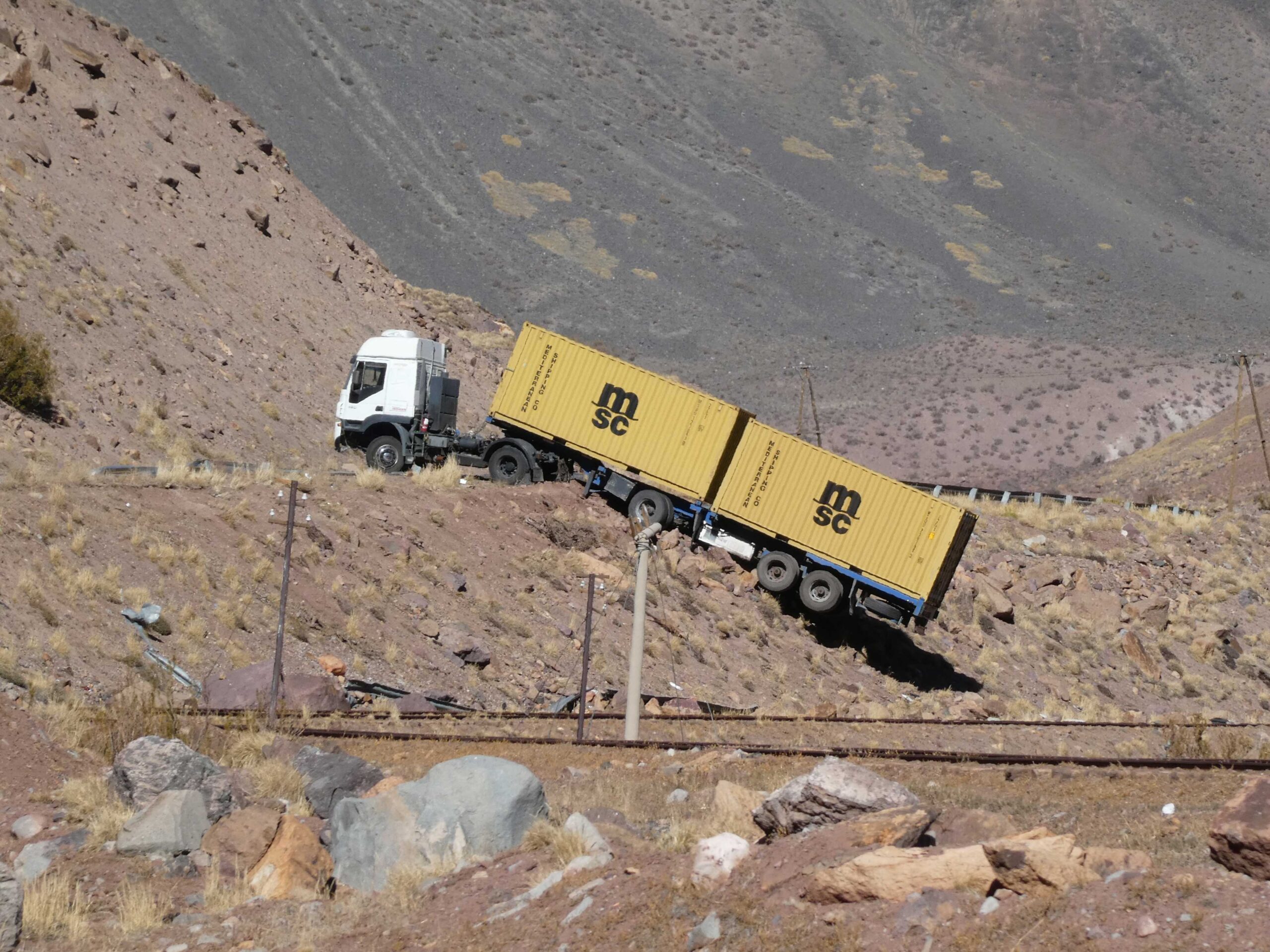
Apparently he was distracted by the beautiful mountain scenery. Along the length of the highway, you’ll also notice train tracks that also run the entire route into Chile. You will also quickly notice that they are in disrepair and could not possibly be in use. Seems like a more ideal route for all the shipping that the perilous roads, but the train route fell into disrepair and disuse during 1970s border disputes in Tierra del Fuego between Chile and Argentina, known as the Beagle conflict. The two countries nearly went to war with each other and all transportation and commerce between the two nations was shut down.
Even though the conflict was eventually settled, the rail route through the Andes, know as the Transandine railway, never reopened. All along the drive there are ruins of former train stations, bridges, and tunnels.
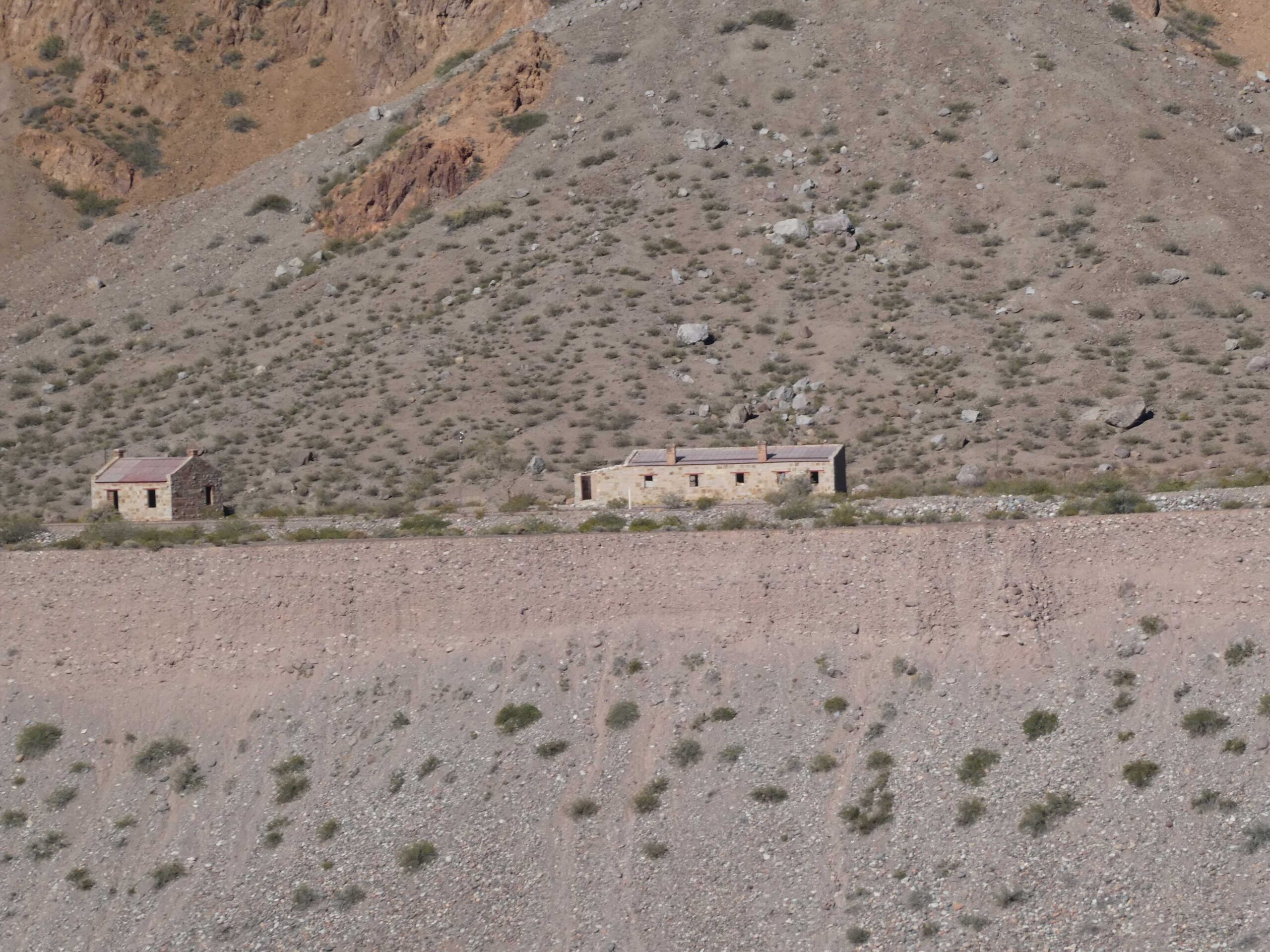


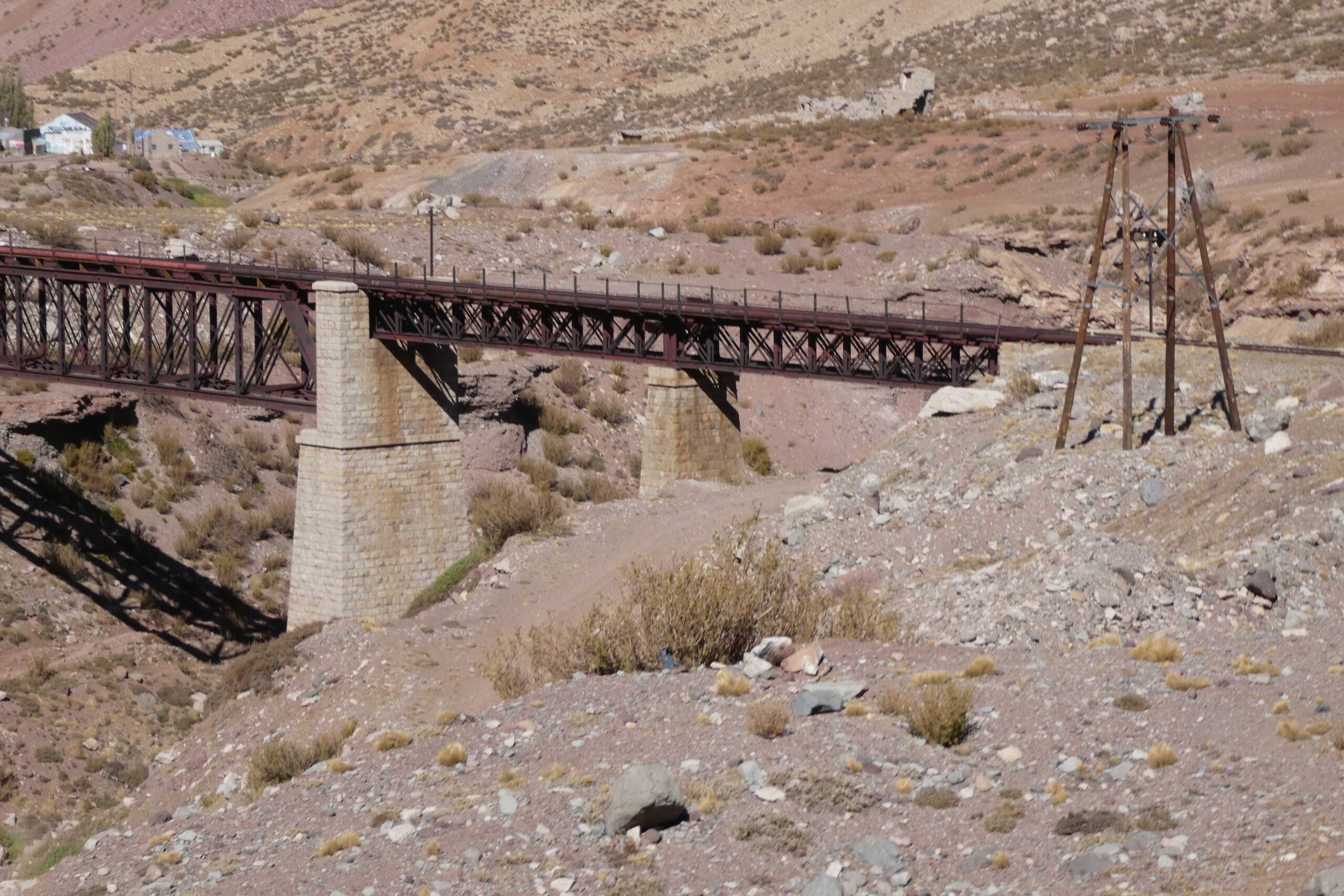
We were obviously fascinated by the fact that such a seemingly essential transportation route between the two countries was simply abandoned. Also considering the significant amount of tourist traffic on the route, it seemed the ideal opportunity for a tourist railway to take some of the traffic off the roads. Bridges like the one below looked fairly new, and it was honestly astonishing sometimes to realize they went unused.
Okay, so we got distracted by the choo choo train that doesn’t run anymore. There are other tourist attractions and sights along the way. Another feature that stood out and was fun to try and photograph were the series of tunnels along the highway that make the passage possible.

The deep variation in the colors of the mountains really stands out, and we did our best to try and capture the contrasts. The uniformity of color these jagged peaks free of vegetation provided a stark backdrop for the vein of different colored rock running across the top as if a road had been cut out.
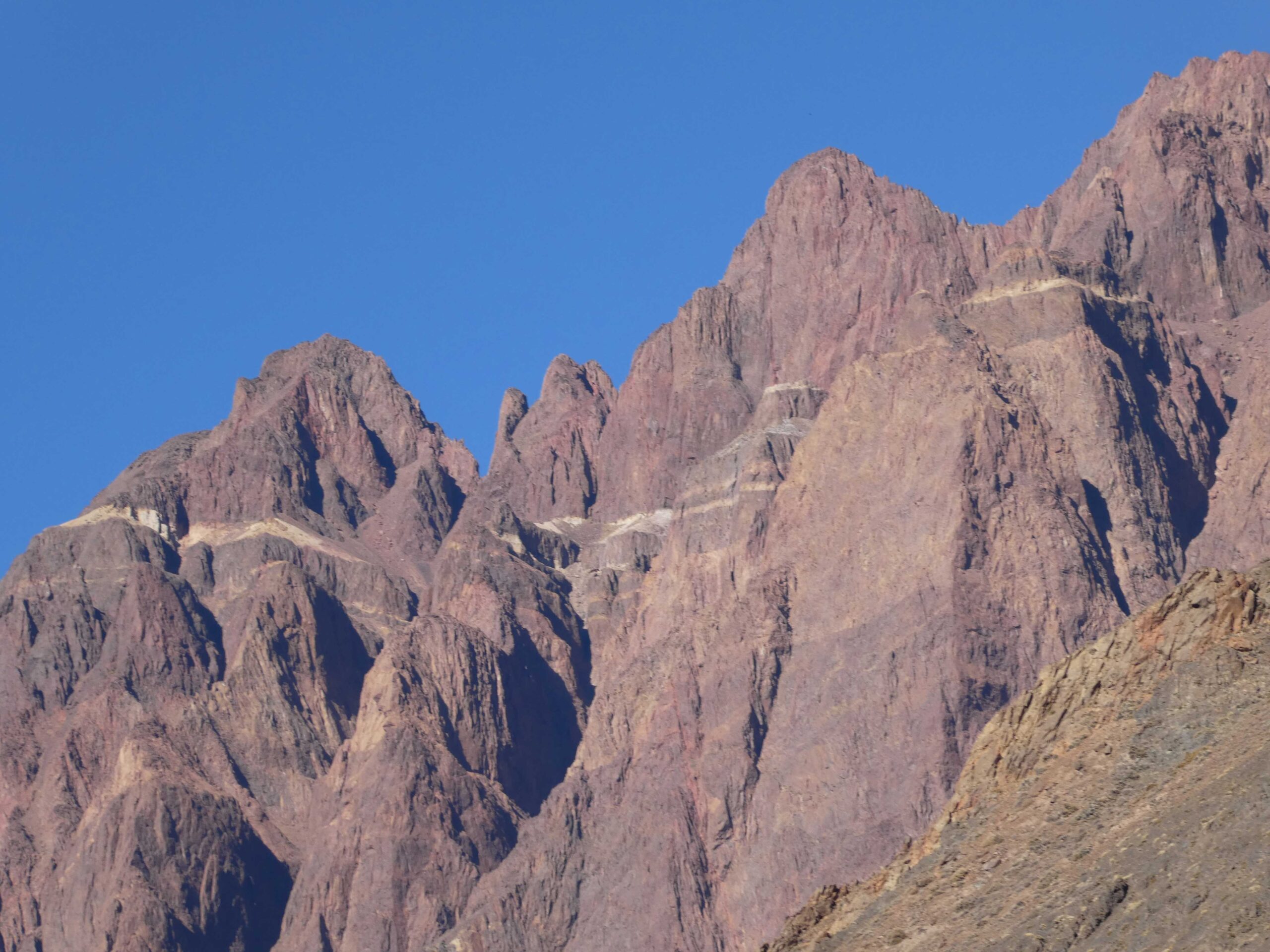
One feature we were amazed by during the entire drive were the bluffs that seemed to go on forever. Having grown up in the Rocky Mountain west, we were used to seeing bluffs in Colorado, Utah, and Wyoming, but those can’t compete with these Andean monsters that went on for kilometers. We don’t even have a concept of scale to estimate how tall and long they were.
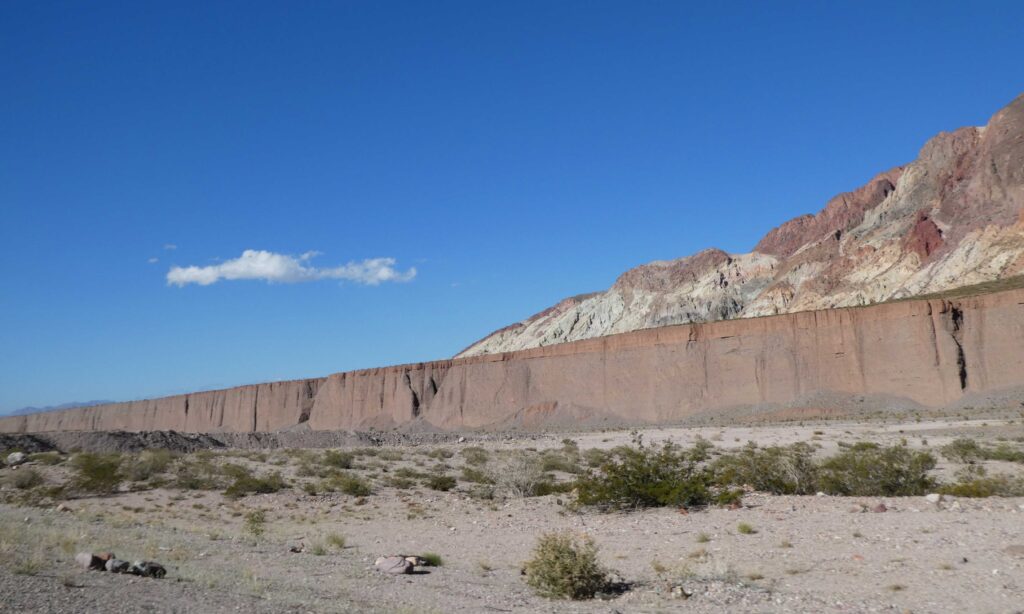

The route includes several tourist attractions. One was the town of Uspallata at the crossroads of Route 7 and Route 40. It is a small town with more restaurants than visitors. It seemed like an extremely unusual number of restaurants until a long-range transit bus stopped and all the passengers poured out for lunch and the bathroom before continuing the journey. It is the best place for tourists headed to Aconcagua to stop for lunch as well, which is what we did. The town’s claim to 15 minutes of fame comes from the fact that it was one of the locations used in the filming of 7 Years in Tibet in the late 90s. That’s why you’ll find the oddly-out-of-place Tibet Cafe on the restaurant strip. Yes, Brad Pitt was here and they want to make sure you know that.

Past Uspallata, you come to the ski resort of Los Penitentes, which hasn’t been open for years, not only due to COVID, but due to the fact that there hasn’t been enough snow to open. The peaks are supposed to resemble penitent monks. We couldn’t see the resemblance as we sped by, and the ski resort wasn’t big enough to get any pictures before it was in the rear view mirror. It appeared to be another oddly abandoned ruin along the route.
The apparent highlight toward the end of the road was Puenta del Inca. It is an odd tourist attraction where a natural stone bridge crosses over a river with a hot springs. One of the last stops in Argentina along the Transandine Railway, the location became the home to a monastery and hot springs resort in the early twentieth century, where tourists taking the railway would stop to heal both body and spirit. Little is left but the train depot, the monastery, and the ruins of the resort, which was flooded by the river and never reopened.
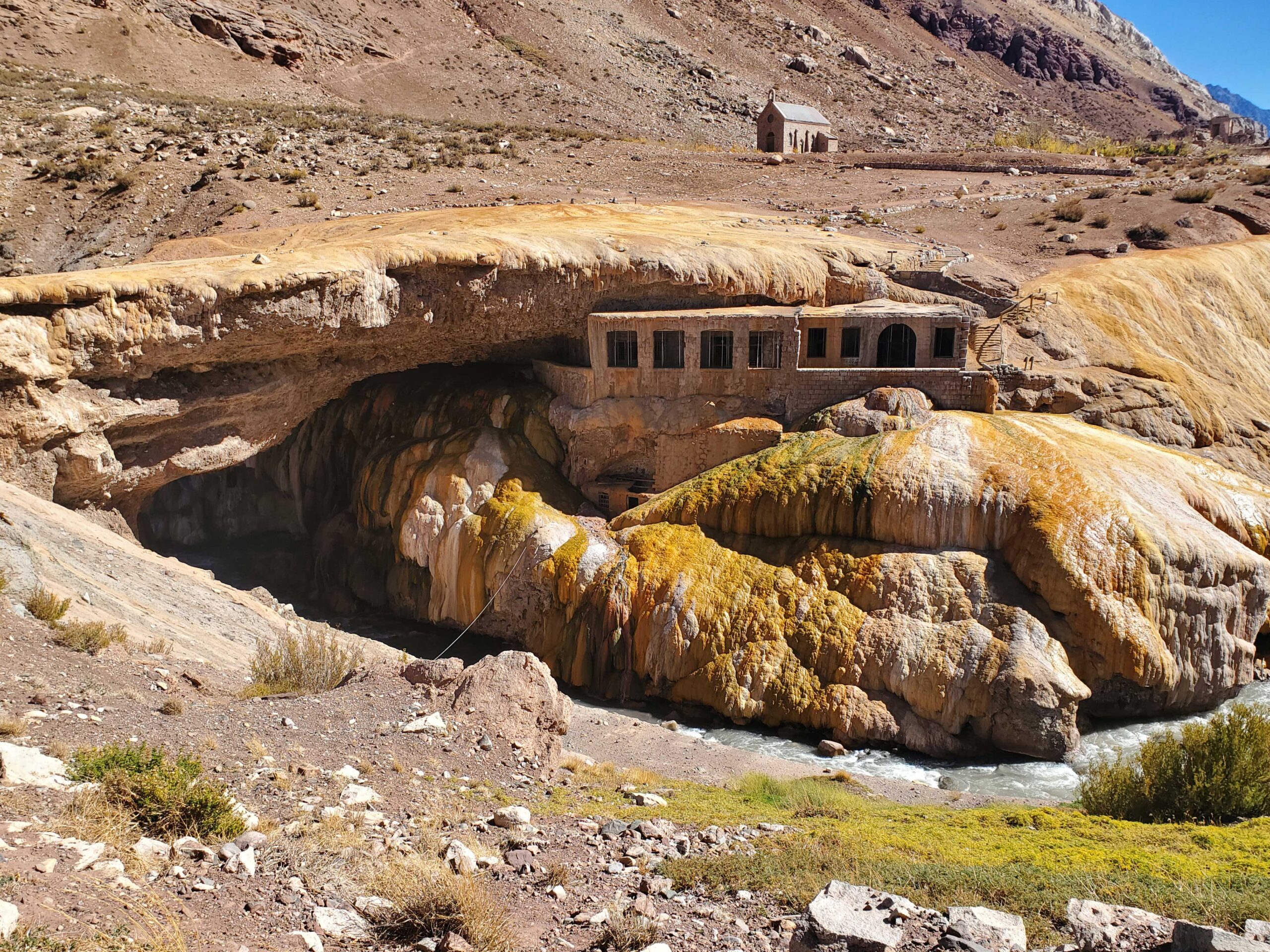
You’ll notice the stark yellow and green coloring on the rocks created by the sulphur in the hot springs. The locals dip all kinds of objects such as sneakers, figurines, flower pots, stuffed animals, and anything that would take on a yellow hue, and then try to sell them to tourists. Tourists, of which there were many as you can tell from the parking lot.
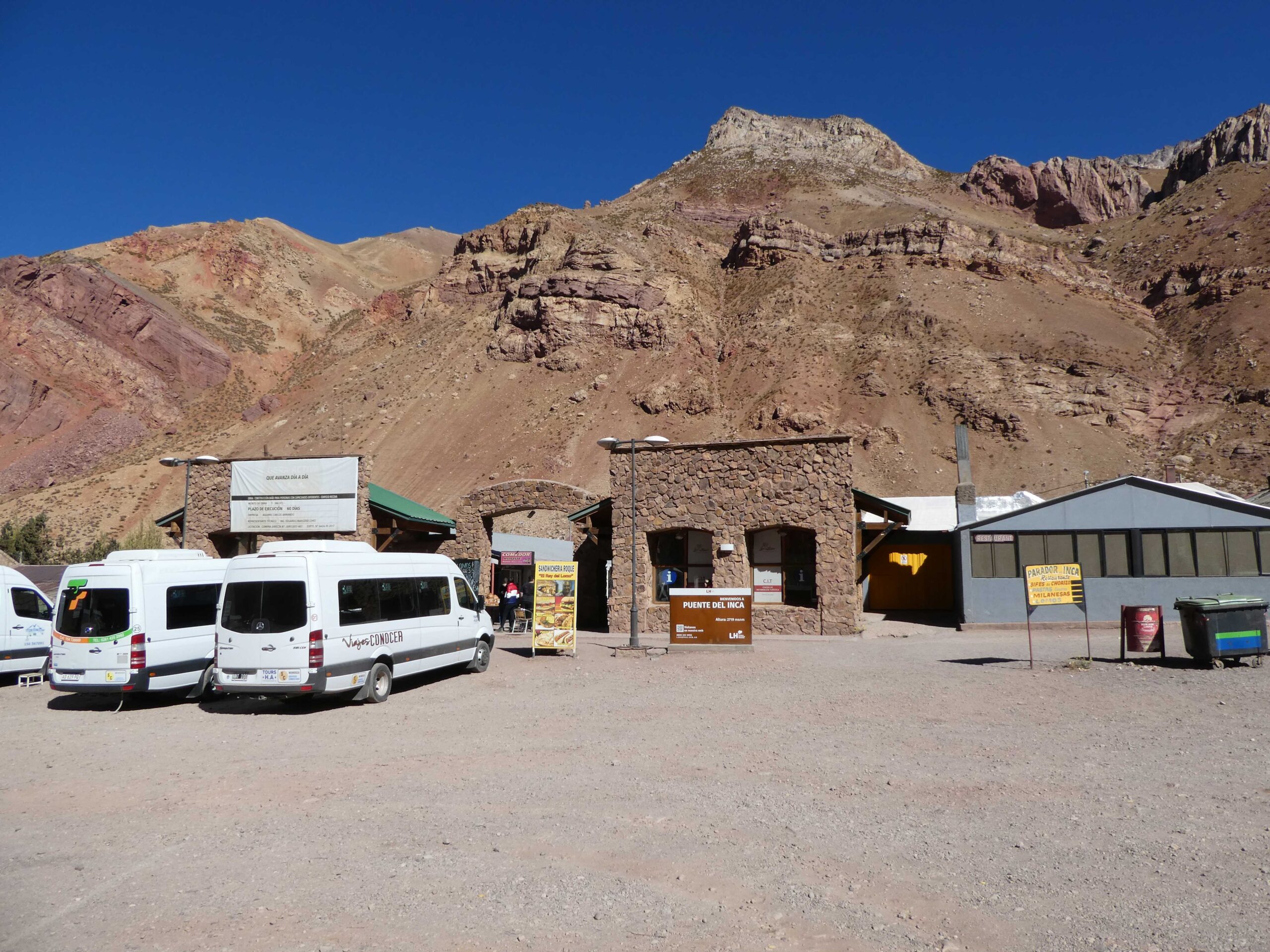
Puenta del Inca was our last stop before arriving at our final destination, Parque Provincial Aconcagua. We were very excited to finally be arriving at one of the world’s tallest mountains and have a short hike. What we encountered was surprising and disappointing. It was barely a stop along the road with a parking lot, bathroom, and a ranger station. There, we stopped and attempted to discuss how to reach the hiking trail and what the park fee was with the three young rangers who seemed to be actually surprised we were even asking. We eventually got enough information to supposedly understand that access to the upper parking lot for “trekking” was by previous reservation only and they wouldn’t sell us a ticket. The trail is only a 45-minute walk and we had driven a significant distance to get there. Ande was understandably pissed and sure that we must have misunderstood something. We weren’t actually attempting to summit the peak but simply enjoy one of the trails we’d read about in guide books. Our alternative was a dirt path off the parking lot where you could sort of see the mountain.
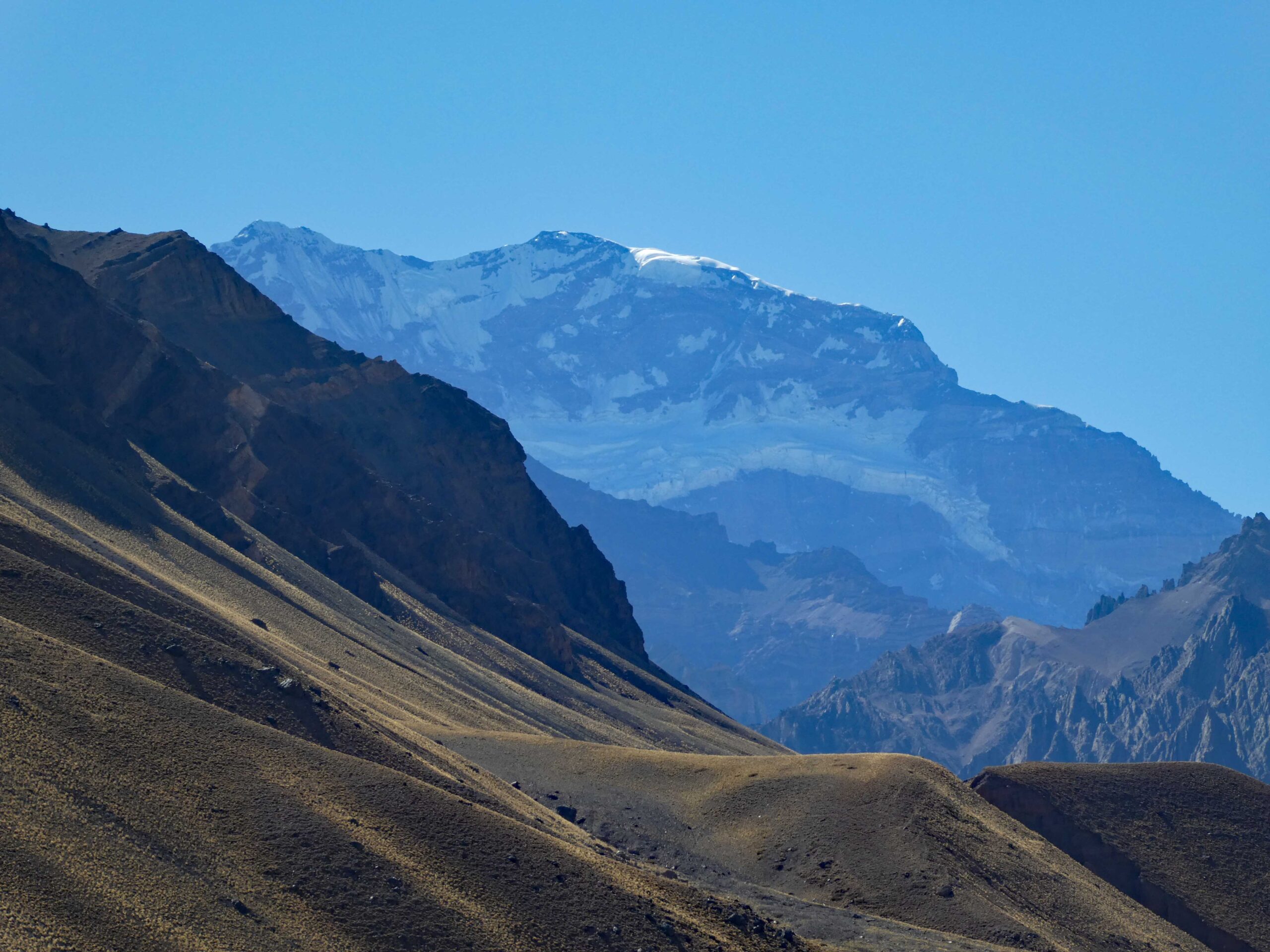
It was honestly an unbelievably disappointing end to an otherwise amazing day. Rather than argue with the rangers and force our way through barricades (Ande wanted to), we took our pictures and headed back down the road to go drink more wine. The semi wreck ended up being one of the more fascinating things we saw on our journey. We frankly got a better picture of the mountain on our drive along Route 40 on the way to Mendoza. Still not something right about that, but what can you do.
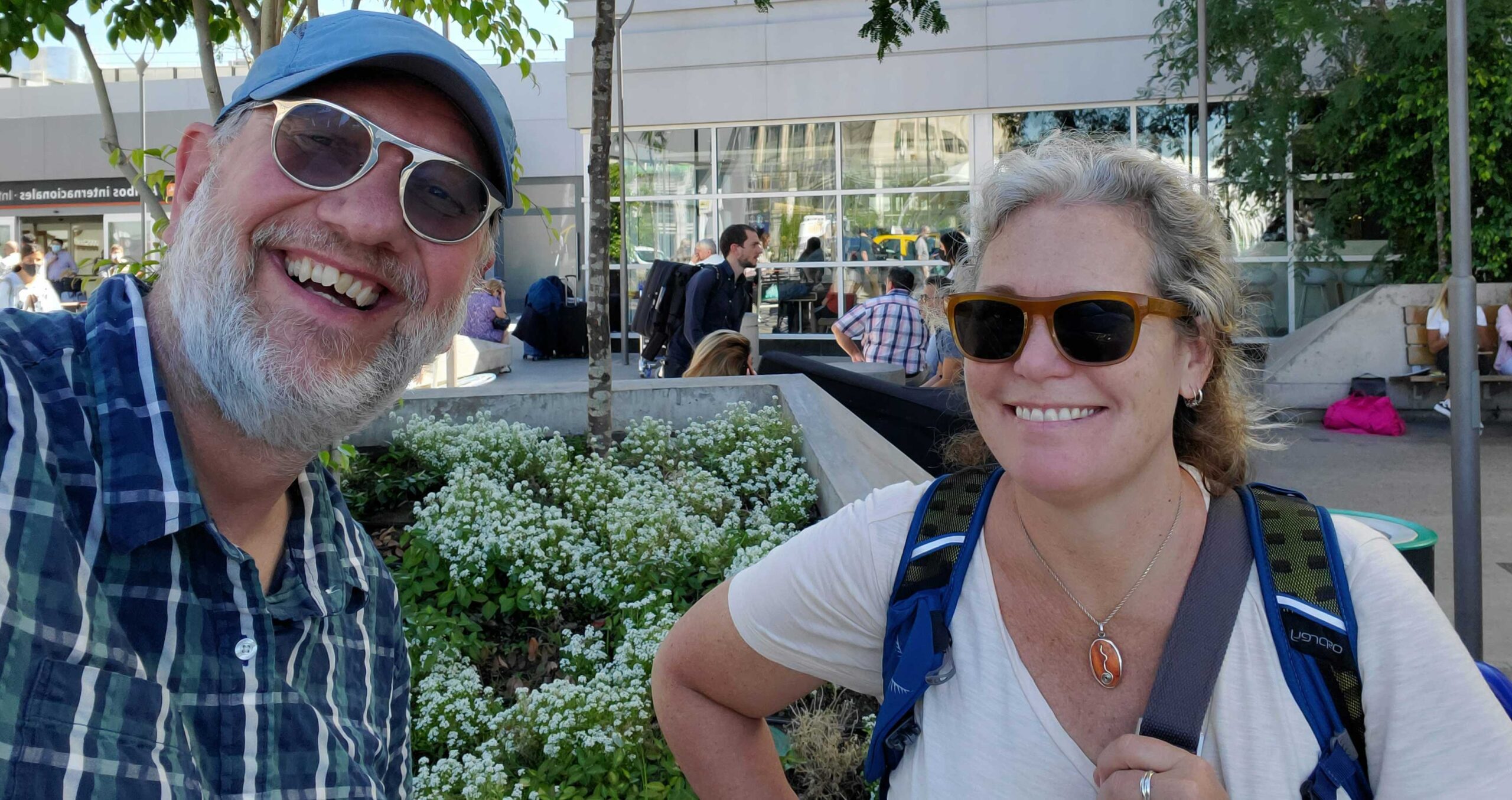
Later. Sorry about your trek, not, , but do understand your disappointment . Wait until Tibet?